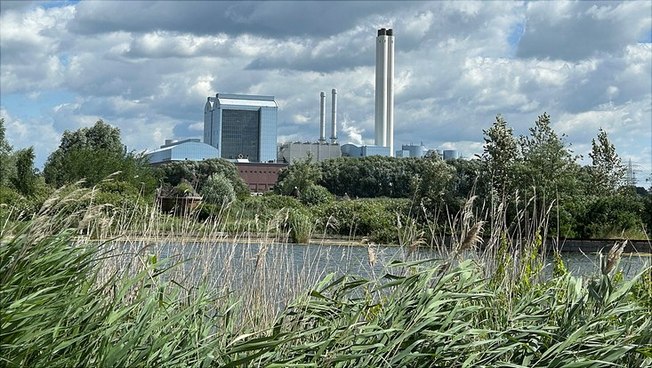Santorini: Gleaning Volcanic History from the Ocean Floor
2 December 2021, by Jonas Preine

Photo: Jonas Preine/UHH
Santorini is a picturesque archipelago in the southern Aegean. The islands encircle a massive volcanic caldera, which the ocean has long-since covered over. Some speculate that Santorini is all that’s left of Atlantis – the fabled, highly advanced island empire that suddenly vanished. The fact that about 3,600 years ago, a volcanic eruption at the center of the archipelago destroyed a flourishing Minoan city may be one of the sources of this ancient legend. The eruption set off a tsunami that was felt throughout the eastern Mediterranean and likely contributed to the decline of the Minoan culture. It also changed the climate: clouds of ash blocked out the sun, covering the world in a two-year-long winter.

On the islands, the traces of the volcanoes reach back as far as 600,000 years. Yet the geological structures only tell part of the story; much of the volcanic field lies underwater, or even under the seafloor. My colleagues at the Center for Earth System Research and Sustainability (CEN) and I, together with an international team of researchers, have now created the first detailed reconstruction of the volcanic field’s spatial and chronological development. Its geological history also includes the nearby Christiana Islands and the submarine volcano Kolumbo.
In the course of several expeditions led by my doctoral advisor Christian Hübscher, we gathered seismic data that can show us how the volcanic centers waxed and wained To get a better picture of what is hidden beneath the seafloor, we use a method similar to medical ultrasounds: behind our research vessels, we drag underwater microphones called hydrophones through the water. With the aid of a specially designed “air pulser”, we produce acoustic signals, which penetrate the seafloor and are echoed back from structures beneath. The hydrophones register the reflected signals, which we can analyze with a special software
Unknown volcano discovered
These signals allow us to create an image of the seafloor, and to delve a few hundred meters below its surface. In this regard, the deposits left behind by eruptions have unique characteristics that we can trace back to individual volcanoes, and occasionally allow us to make new discoveries – like a previously unknown volcano to the west of Santorini! Long-since dormant, it is now covered in millennia of more recent sediments.


But just how old are the different layers? To find out, we measured their thickness. On the basis of average sedimentation rates, we were able to estimate their ages and determine when individual eruptions took place. We found that the volcanic field was created in the course of four different phases and from a chain of individual volcanic centers.
The first phase began roughly three million years ago, in the Pliocene. It wasn’t until the final phase, which began roughly 350,000 years ago, that the central volcano, whose deposits can still be seen today on Santorini, formed. We surmise that the phases were closely connected to the tectonic activity of the nearby rift system – a series of extended valleys in the Earth’s crust. Our findings will help to reconstruct the frequency of volcanic eruptions in the region, identify hazards and more reliably assess the attendant risks.
Further information
For his doctoral thesis, geophysicist Jonas Preine is investigating the evolution of volcanic fields. His findings are essential to an international expedition in 2022/23, which will include gathering sediment cores.
Research Paper: J. Preine; J. Karstens; C. Hübscher; P.Nomikou; F. Schmidt; G.J. Crutchley; T.H. Druitt; D. Papanikolaou (2021): Spatio-temporal evolution of the Christiana-Santorini-Kolumbo volcanic field, Aegean Sea. DOI: 10.1130/G49167.1
Newspaper: This article was first published as a guest article in the Hamburger Abendblatt as part of a monthly series on climate research. Find all articles of the series here.


